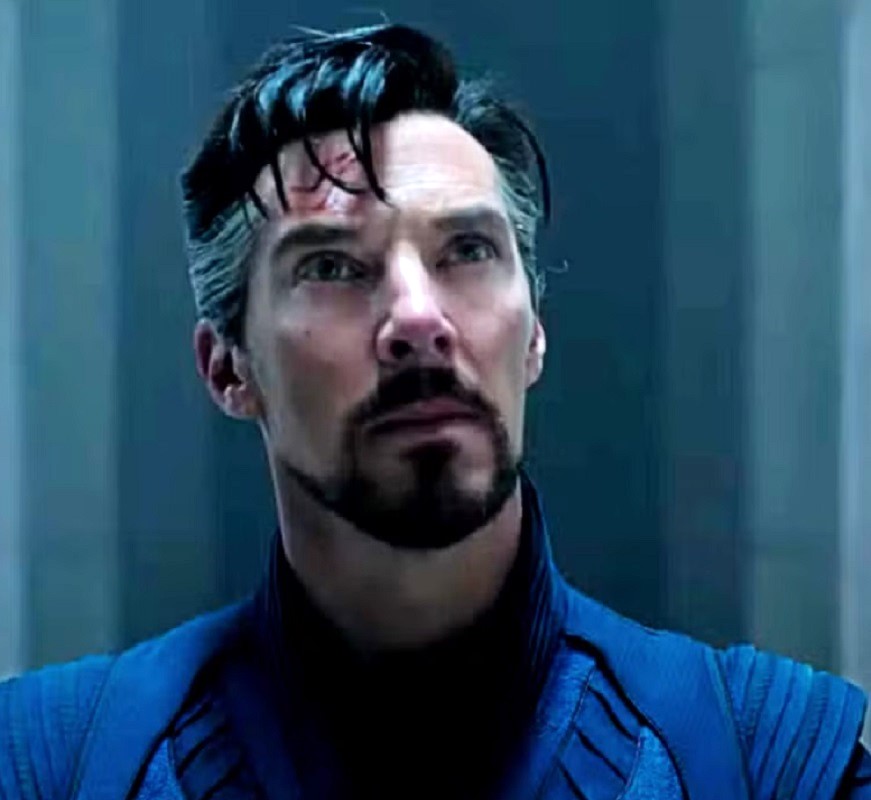

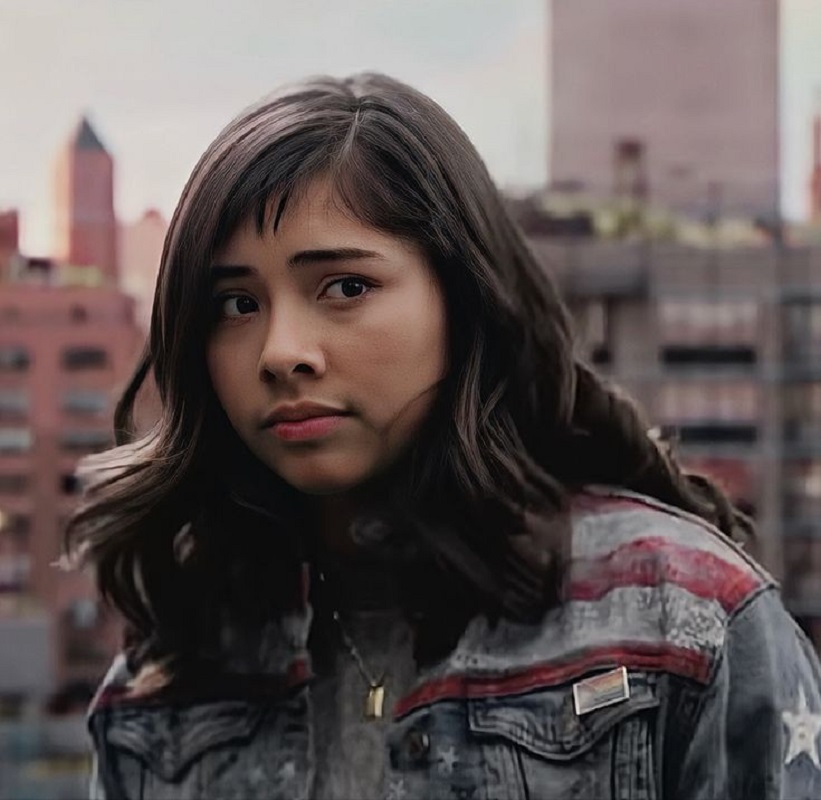

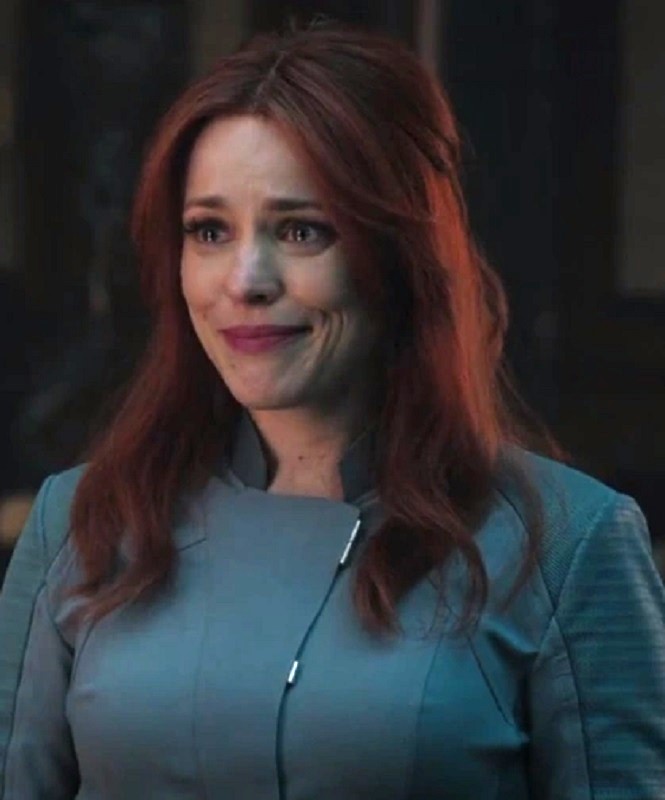
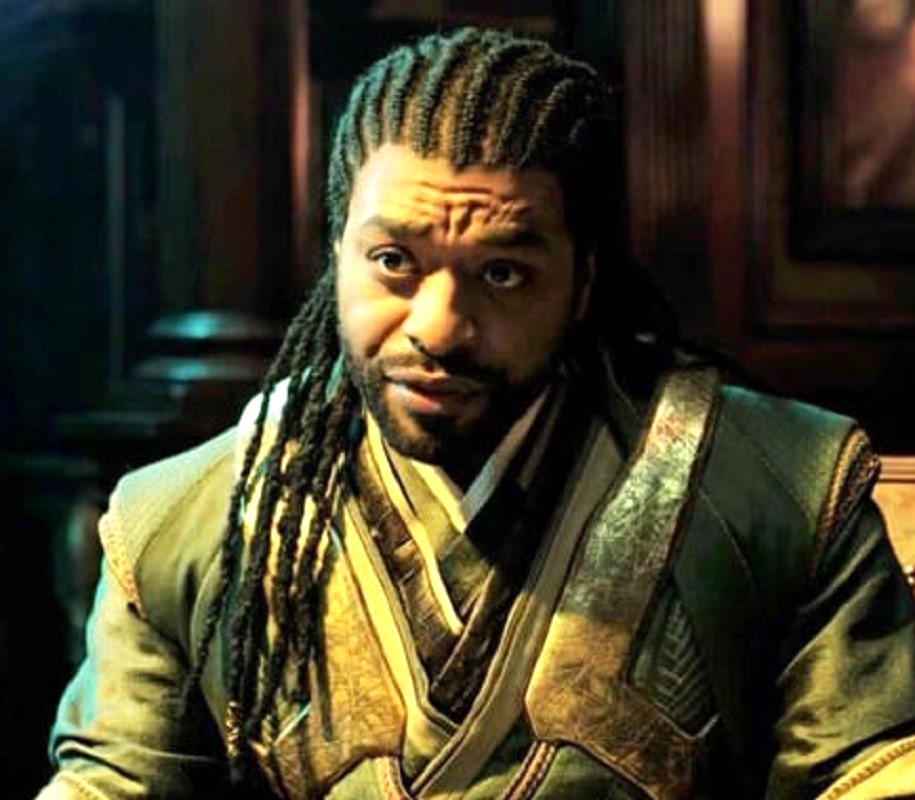
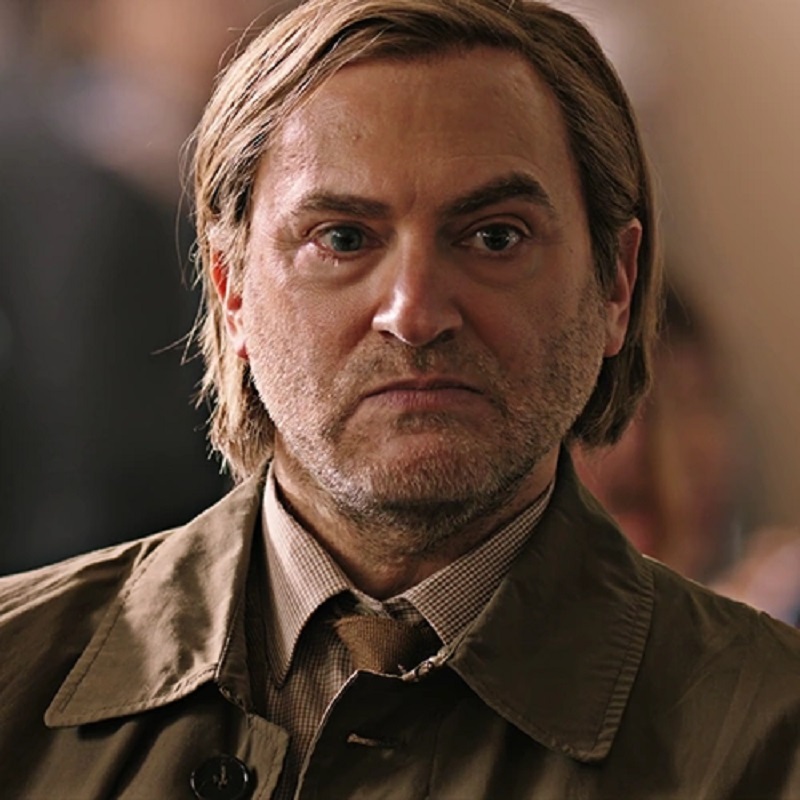
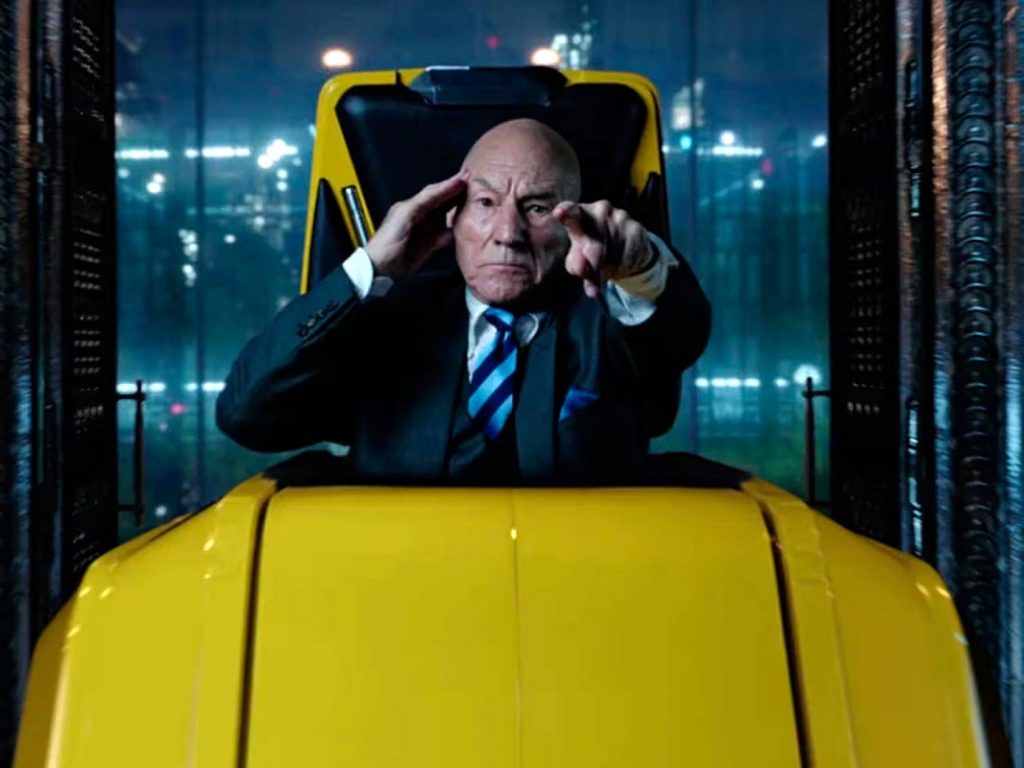
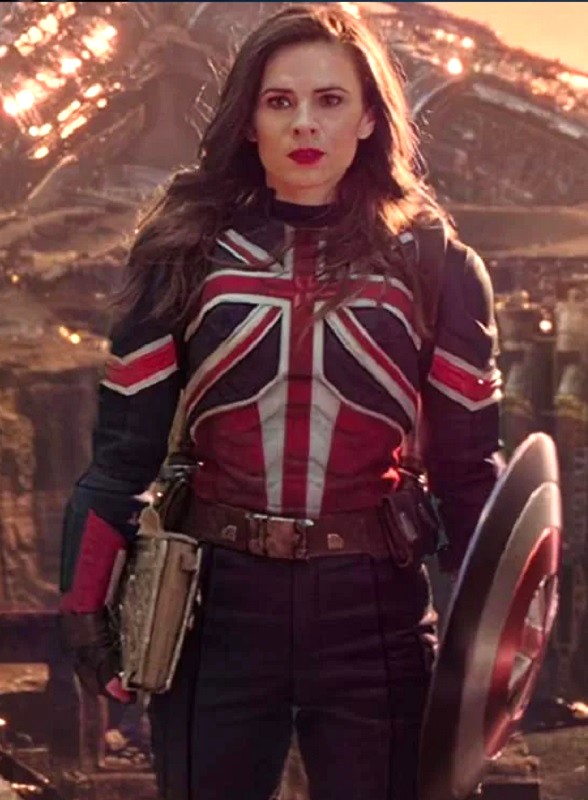
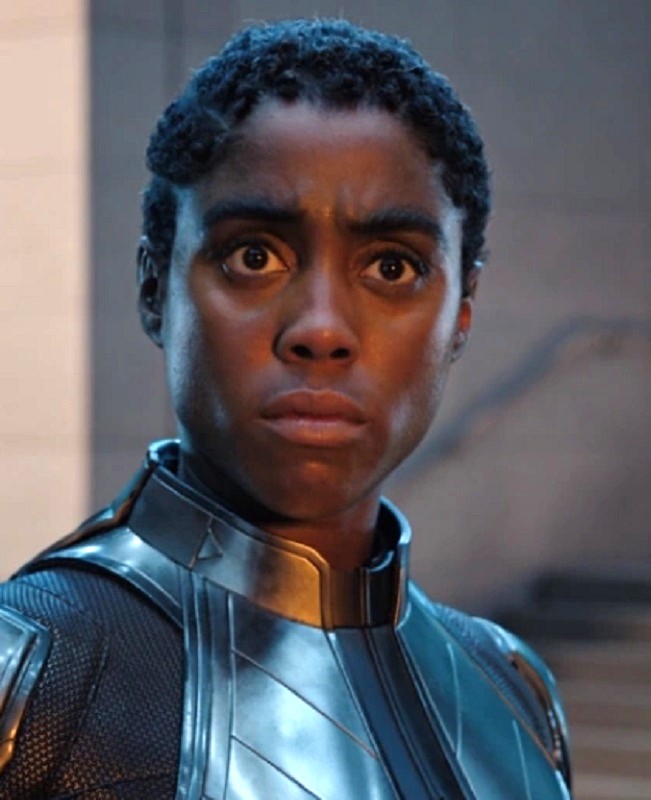
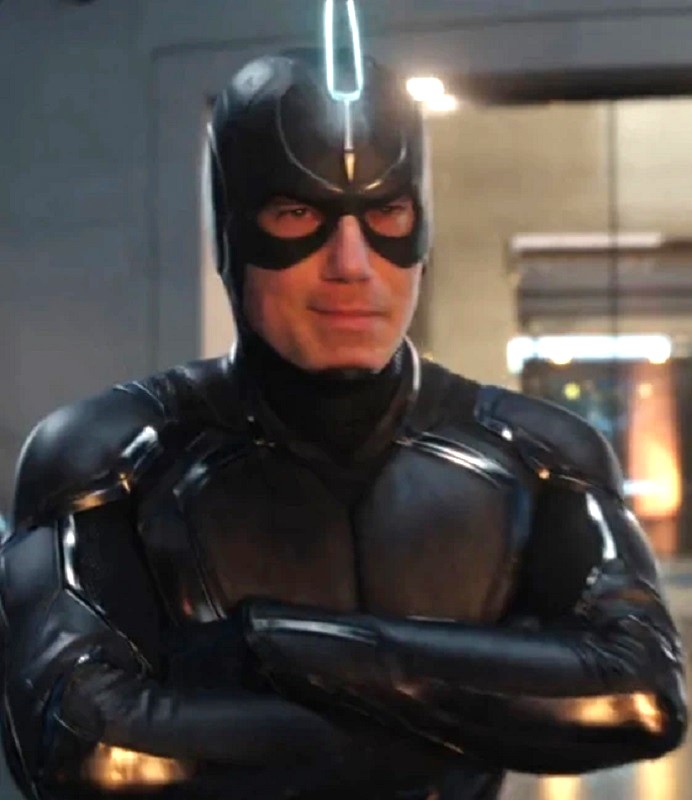
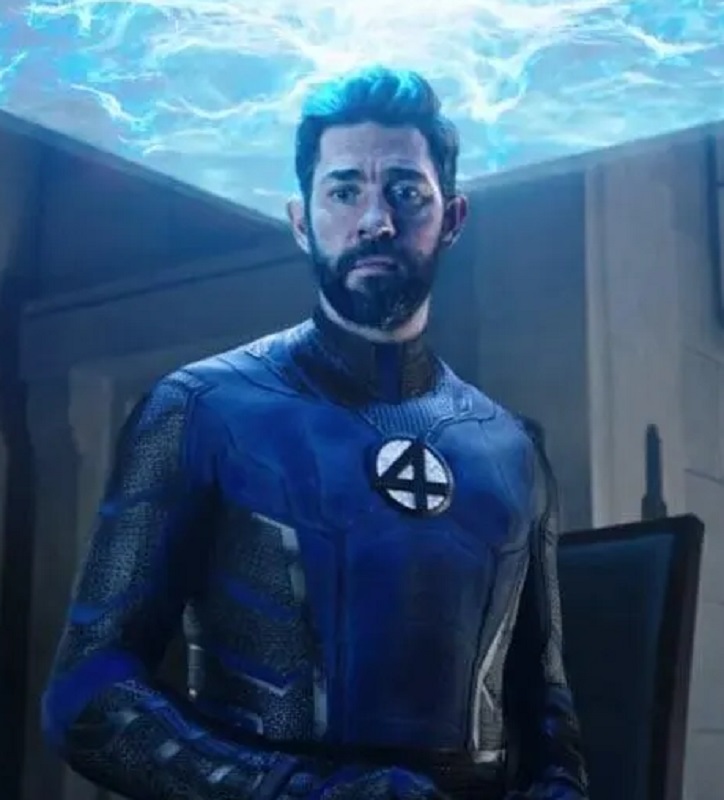
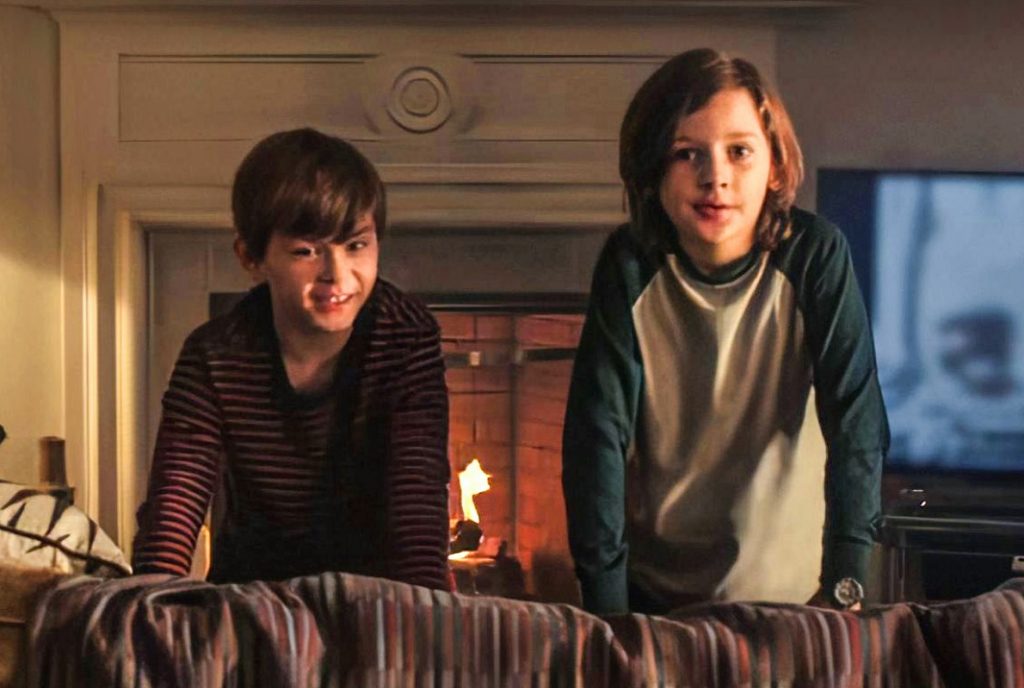
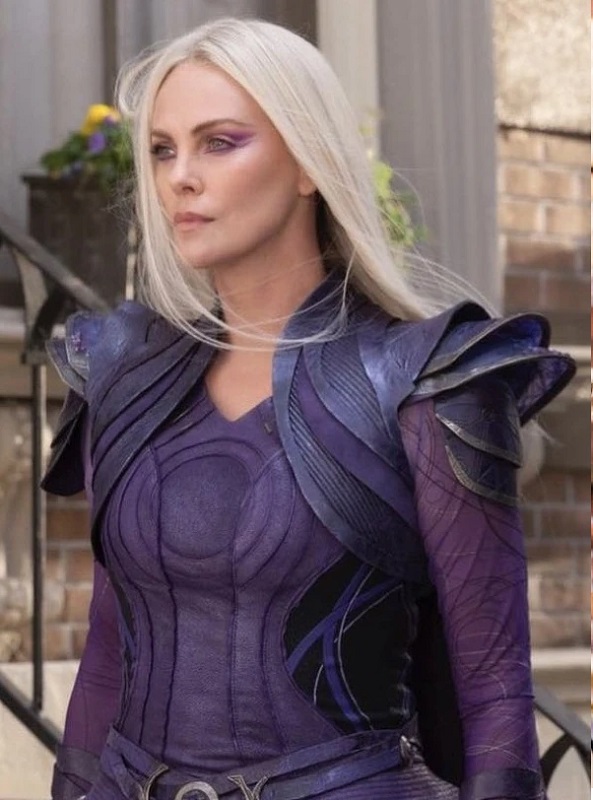














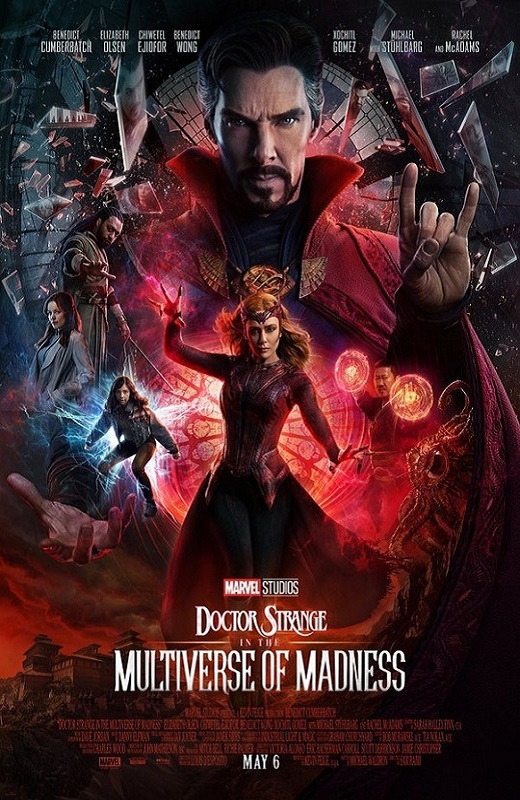
28 – Doctor Strange: In the Multiverse of Madness
This is the second time I have watched this movie, and I enjoyed it even more this time than I did the first. It is the first MCU film that has been called a horror film, and was even helmed by the renowned film director, Sam Raimi, the same man who made the Evil Dead trilogy and Drag Me to Hell. There was some really scary imagery and some overtly frightening story elements that were crazy and awesome! But it was still an MCU action movie, and that never went away. And Raimi did a fantastic job, too. The story was tight, the acting was incredible, especially from Elizabeth Olsen, and the visual effects were phenomenal. He got so many things right.
First off, there were the characters. The movie didn’t just use the returning characters of Doctor Strange and the Scarlet Witch. It developed them. It brought them to the next phase of their overall arches. Wanda Maximoff, because of the events that took place in the Disney Plus TV show, WandaVision, actually became the main villain, and it made sense. After everything that happened to her in the Infinity War Saga, and as her reality altering powers grew, becoming the bad guy almost seemed like the natural progression for the character. And Doctor Strange, himself, had to start using dark magic in order to fight her, magic that was dangerous to use. And it changed him in fundamental ways. The dark stains on his fingers that appeared after he used the Darkhold, and the menacing third eye that appeared on his forehead at the end of the film, are both indications that his soul was being corrupted by touches of evil.
Second, were the horror elements. The Scarlet Witch was like a demon, bent on murdering an innocent young girl in order to kidnap her children from another Wanda in a different reality, calling the children hers. That’s some pretty dark stuff. The scene where she attacks and destroys Kamar-taj had a shot that reminded me of The Ring, where she claws and crawls her way out of the mirror dimension like a monster. It was very cool!
And we have to talk about the young girl she is trying to abduct and murder, in order to steal her powers. She is America Chavez, a mutant with the natural ability to travel between dimensions at will. The first time I saw the movie, I wasn’t that impressed with her character, but this time, I saw her in a different light. I’d thought she was an underdeveloped character who did a lot of reacting, and not a lot of acting. But if you think about it, that was exactly the way the character needed to be. She was not a seasoned superhero like Doctor Strange. She didn’t have the experience to be able to do much more than run, and keep running, and try to understand a power she couldn’t control. And she wasn’t the main character, so it was ok.
Then there was the whole fan-service scene, the Illuminati. They brought in a couple of fan favorites from several different sources like Patrick Stewart as Professor X, Karl Mordo, Haley Atwell as Captain Carter, from the Disney Plus animated What If… series, Captain Marvel, played by Lashana Lynch, instead of Brie Larson, Anson Mount playing Black Bolt from Marvel’s ABC television series Inhumans, and John Krasinski as Reed Richards. Krasinski was the perfect Reed Richards, if you ask me, but the actor has said he doesn’t want to play the role on a long term basis. As of this writing, the official MCU’s F4 movie is still six months away, and the role will be taken by Pedro Pascal. Never thought of Mr. Fantastic as Spanish, but I’m on board. But not that the Illuminati mattered much. The Scarlet Witch murders them all in a pretty gruesome fashion. The shot where she broke Professor X’s neck was pretty horrifically intense.
It is also significant to note that according to Wikipedia, Doctor Strange in the Multiverse of Madness was one of the most expensive films ever made, with a production budget of $350.6 million. And it was a very successful film, grossing over $955.8 million at the box office. Obviously they got it right, and I thoroughly enjoyed watching the movie. Loved it!
Top 10 Favorite Parts

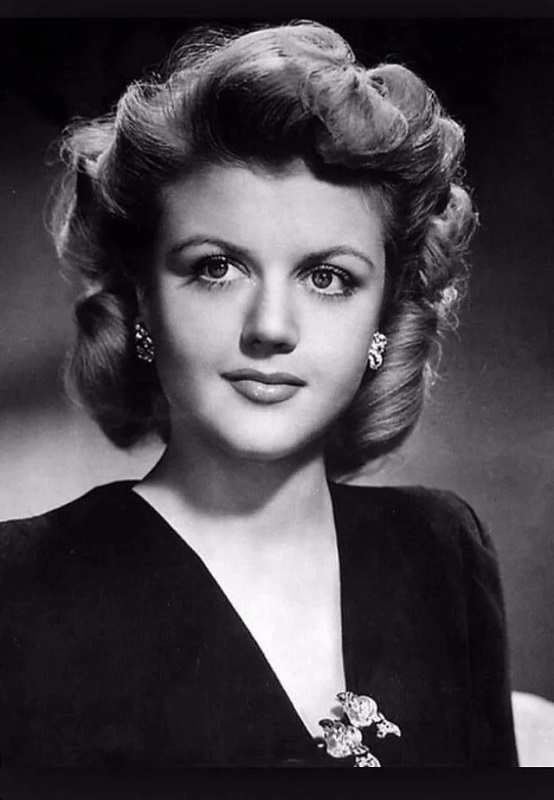

1944 – Angela Lansbury
Gaslight
We all know Angela Lansbury from her performances in the modern film era like the voice of Mrs. Potts in Beauty and the Beast, and the popular TV show Murder She Wrote. And even now those can be considered older performances. After all, Beauty and the Beast came out over 30 years ago. But once upon a time, she was a young actress in old Hollywood. And apparently, she was quite the looker! She had the face of a cherub and the personality of a saucy lady. With that combination, she was actually quite delightful to watch on the screen. And to think, this was her very first film roll ever, is quite impressive
She played Nancy Oliver, the maid that was hired by the villainous Gregory Anton. She is a pretty young cockney girl who, as it turns out, enjoys the company of men, and usually responds to them in terms of sexual attraction. Even Gregory, Himself, despite the fact that he is a married man, has to fend off the amorous attentions of Nancy. The role needed a certain kind of cheekiness that Lansbury really delivered. I loved the scene where she interacted with her boyfriend, Constable Williams. She plays coy with him, letting him know that she might not get together with him. But then, as he is leaving her, he asks, “Same place as last time?” She smiles slyly and agrees, “Same place as last time.” Very saucy.
But then she also did a fine job of playing the dutiful and attentive made, when in Paula’s presence. And there were more serious moments that she handled deftly, like when she was being questioned by the Master and Mistress of the house about the missing picture, or when she was discussing Paula’s apparent ill health with the cook. And I was amused in the scene where she tells Gregory about how much she enjoys musicals. I clearly saw her future performance of Mrs. Lovett from Sweeney Todd in that brief scene.
I don’t exactly want to say she nearly stole the screen whenever she was in a scene, but she almost did. Of course, actually steeling the screen from Ingrid Bergman would have been a pretty tall order. But I’d say she was easily a standout. There was clearly talent there, and she used it well.
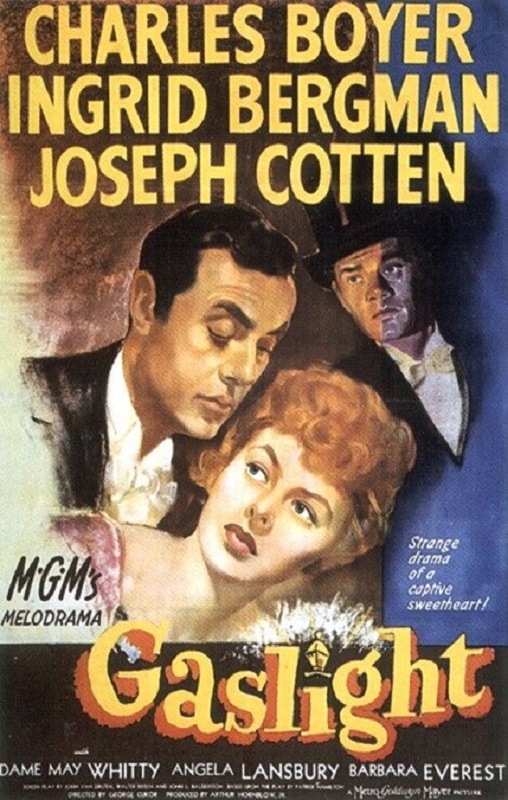
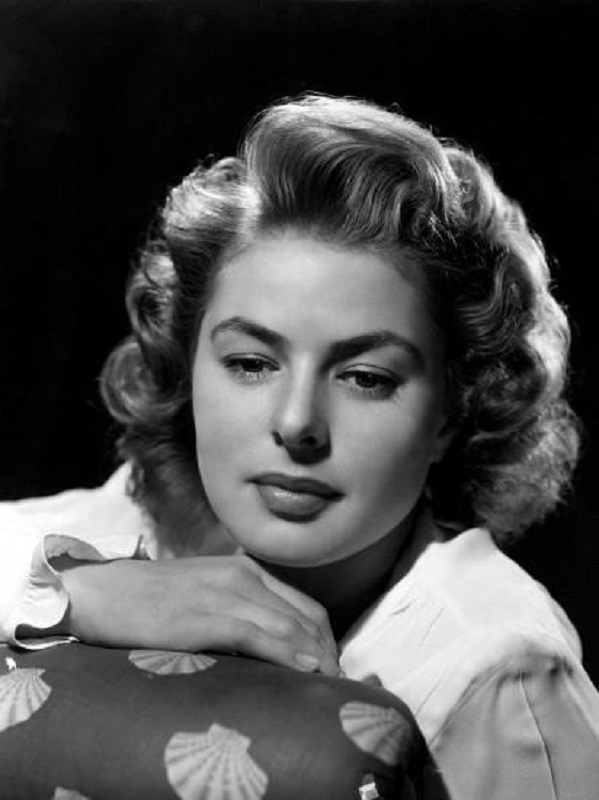

1944 – Ingrid Bergman
Gaslight
Ingrid Bergman was clearly an incredibly popular actress. She seemed to be nominated for something new every year. The Swedish actress was gorgeous, and had a slight European accent, giving her an exotic air. And she could act. But more than that, the role she got to play in Gaslight gave her a chance to play some fine drama, some intrigue, and a little madness. It is no wonder she won the Best Actress award. She deserved it.
In Gaslight, she played the part of Paula, a woman whose mother was murdered by a man who was after her jewels, which had been hidden somewhere in the attic of her London house. After the murder, Paula goes to France to be away from the home with the haunted past. She meets a charming man who sweeps her off her feet and marries her. He insists that they move back to the house in London, where he slowly and methodically drives her insane. It starts almost imperceptibly with little chastisements about her being uncomfortable in the house in which her mother was murdered, but it escalates into deceptions about her losing things or forgetting things. And why? Because apparently, her new husband is the same man who murdered her mother, and his intention in marrying her was only to get another chance to find the jewels.
I certainly hope they filmed the movie in sequence, because she had to be very particular about how she performed each scene. As her husband, played by Charles Boyer, starts to make her think she is a forgetful person, tells her that she does things that she cannot remember doing, or says things that she does remember, actually never happened, she slowly starts to lose her grip on what is real and what is not. She starts to believe the lies he is constantly telling her. Bergman had to know where the story was. You can see the steady progression of her descent into madness so that by the end of the movie, when the truth is revealed, her relief is palpable, and she made us all feel that relief with her.
She played it perfectly, never going over the top, but never denying what was being done to her by being too subtle. Except in that last scene, where Boyer is tied in a chair and all his secrets are revealed. Here, she goes a little over the top, but I think the script demanded it. She basically tells him that if she was truly sane, she might have forgiven him and set him free, but because he had driven her mad, she was glad that he was going to pay for his crimes, not only against herself, but against her mother, as well. She was incredible. She really let loose, and you could see a different kind of madness in her eyes, one that really spoke of sanity. That must have been a challenging scene for the actress, but she handled it beautifully.
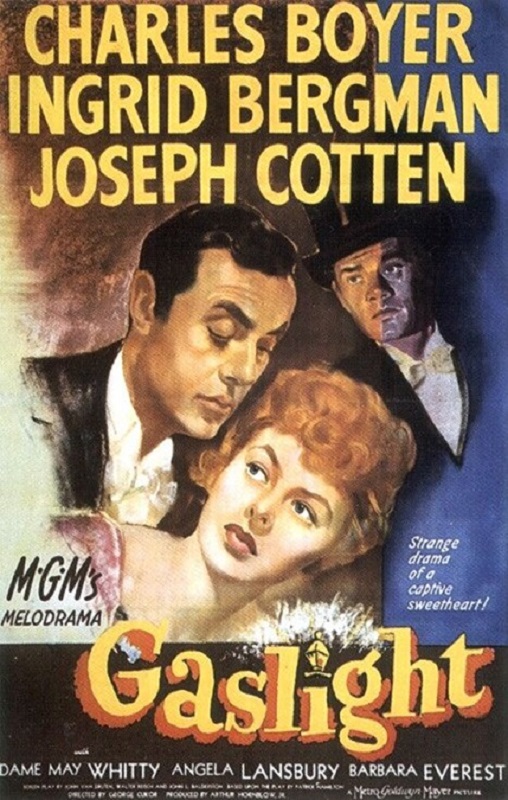
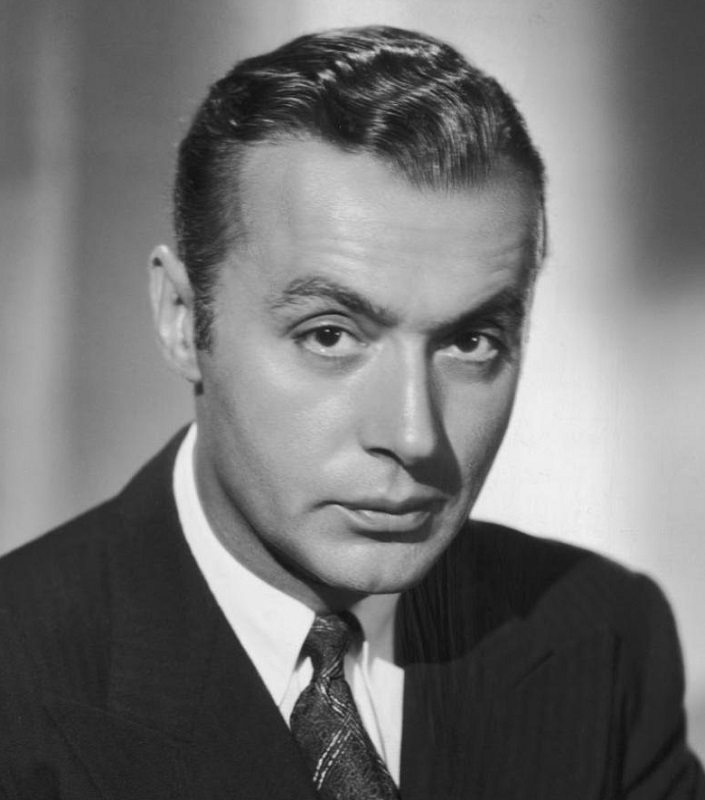

1944 – Charles Boyer
Gaslight
I’m going to start this off by saying that I’ve never been a big Charles Boyer fan. For the most part, he always seems to play the same role over and over. He’s the suave French romantic lead. And there are always several things about that role, or at least the way he plays it, that don’t really sit well with me. For one thing, his supposedly charming persona always seems legit on the surface, but I’ve always thought there is a slightly sleezy, slightly bullying, and a little more than slightly predatory edge to him.
But here, all of that works to his favor. Here, he is the bad guy, and those qualities are exactly what are needed to play the part of Gregory Anton. Here, he is able to really lean into that predatory edge and it worked. He played a man who was obsessed with recovering a bunch of valuable old gemstones hidden by an opera singer, so much so, that after he murdered her without being caught, he marries her daughter years later, only to have a second chance at recovering the jewels. But this time, instead of murdering the woman, he slowly drives her insane, making her question her own sense of reality, her own sanity.
Boyer played the villainsous part as cold and calculating, remorseless and relentless, manipulating his snew wife into believing she has strong hallucinations, that she is forgetful or delusional. There was a dark unpredictability about him that made him dangerous. And it was such a departure from the role I’m used to seeing him play that I found myself enjoying his performance. And what made it so great was that he knew how and when to turn on that aggressive charm that he was known for, and when to snap, turning vicious in the blink of an eye. There were several scenes that stood out to me as particularly well done. My favorite is the one where he really looses his cool because his new wife finds an old letter he, himself, had once written to her mother. You can see that he is trying to keep his cool, but when he looses it, he is frightening. Boyer really played it well, and I think he deserved his nomination. Had I been a voter, I might have voted for him instead of Bing Crosby, but that’s just me.


















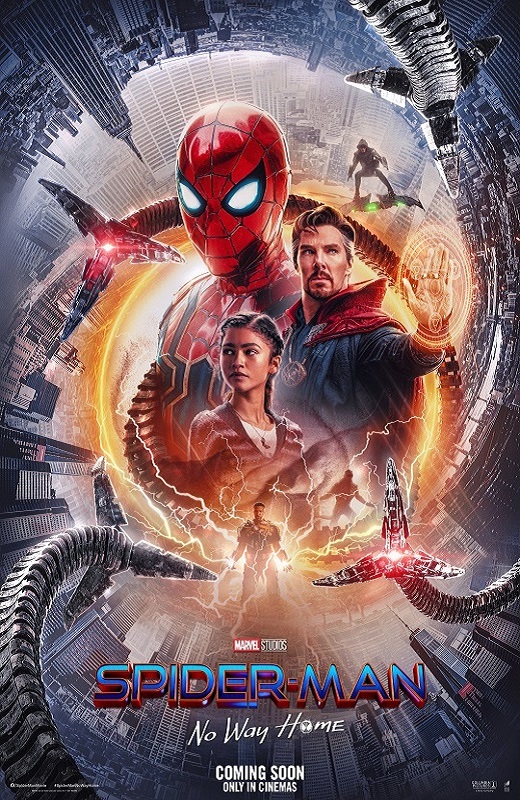
27 – Spider-Man: No Way Home
Even though I enjoyed some of the more unpopular MCU movies like Black Widow and The Eternals, unlike many Marvel fans, I understand that maybe Marvel was off its game. But here with the third movie in the Spider-Man sub-franchise, No Way Home, the quality came back in a big way. Not only did they deliver a fantastic story, but they were able to neatly tie the larger MCU franchise into the Sony Spiderverse without even breaking a sweat. It was seamless and completely believable, within the confines of the superhero genre. Here was our first big introduction to the Multiverse, and it worked beautifully.
We picked up right where the last Spider-Man movie left off. The world suddenly knows who the webbed hero’s secret identity is, and it not only ruins his life, but the lives of his friends and family. I love the somewhat realistic path the story takes in that direction. It follows the progression, or should I say, the conclusion of the romantic relationship between Aunt May and Happy Hogan. It follows the deepening of the relationship between Peter Parker and MJ. It gives Ned a chance to have some super-powers. And through all that, it gives us plenty of fantastic action sequences, which goes without saying. It is, after all, an MCU Superhero Movie.
But the coolest thing this movie did is rounding up the two Sony Spider-Mans and most of their villains like the Green Goblin, Dr. Octopus, Electro, Sandman, and the Lizard, and the got all the same actors to come back and reprise their roles. It was incredible enough to see Andrew Garfield and Toby MaGuire show up as variants of Peter Parker, but to get all the best villains back as well was a pretty incredible feat. And they did it in a way that totally made sense! And the great thing about it was that the actors from the Sony Spider-Man movies didn’t just show up for little cameos. They were full-fledged participants in the narrative. Not only did this movie pay homage and respect to the Sony movies that came before, but they built on the complexities of the various characters and continued their stories. It was brilliant!
But they even went a step further. They gave the villains costume upgrades, and even went so far as to explain the differences. For example, in the Sony movies, Electro’s powers were blue-based. But here they changed it to yellow, which is actually more comic-book accurate, and they explained it with just a quick line or two of dialogue. The energy in the alternate universe felt different to the character and manifested itself in a different way. Smoothly done!
But not only was there thrilling action, like the climactic battle between the three Spider heroes and the five super villains, but there was also a huge emotional content in the film. The whole idea of Peter asking Dr. Strange to make all his friends forget about him was actually heartbreaking, if you think about it. And the scene where Aunt May dies was gut-wrenching. And here, it was she, and not Uncle Ben, that delivers the great line, “With great power comes great responsibility,” a phrase that has become synonymous with Spider-Man.
For me one of the best parts of the movie was one of my least favorite Spider-Man bad guys, the Green Goblin. And that is because of Willem Dafoe. He is such a phenomenal actor! I’ve never seen him do a bad job in any movie he’s ever been in. He always gives every performance a thousand percent. And this movie was no exception. But he made the Goblin even scarier here than he could in the Sony film. They took the silly looking mask off his face and allowed us to see Dafoe acting the hell out of his part. It showed us his conflicted nature, and the true madness of the villain. The fight in the apartment building between Spider-Man and the Green Goblin was awesome, and ended with the emotional death of Aunt May. This movie got so many things right, and it is great to see the MCU back on top of its game.
Top 10 Favorite Parts
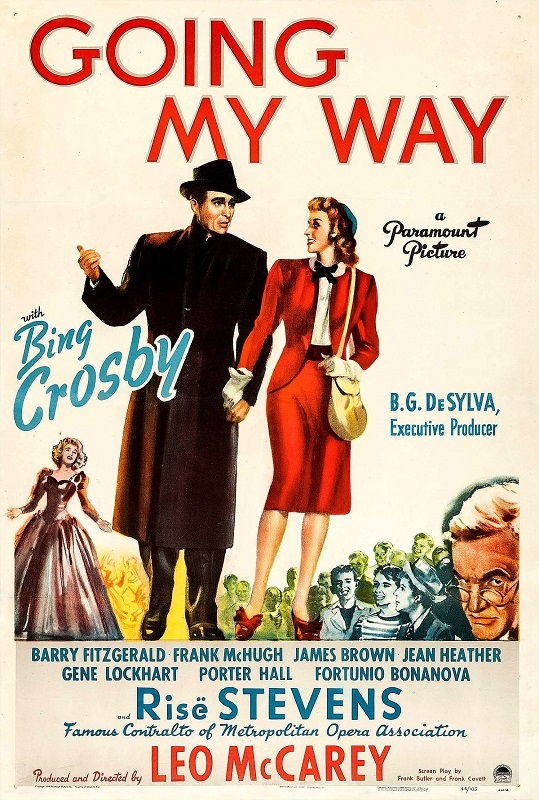
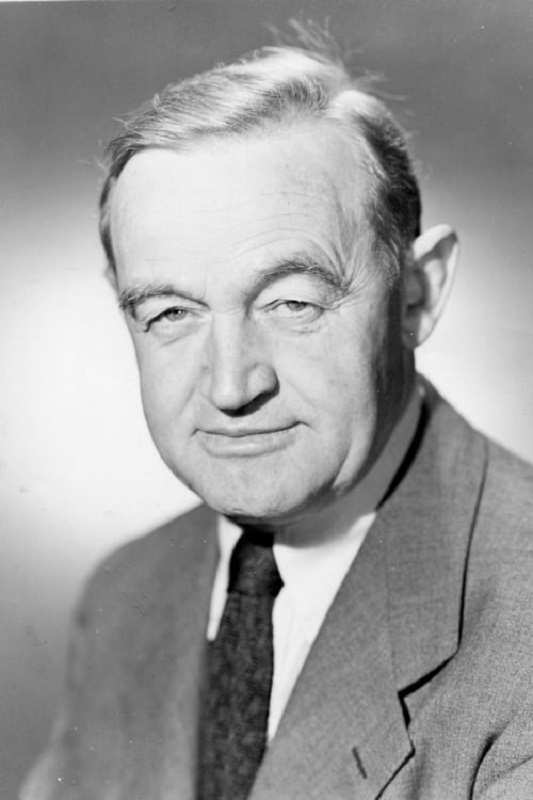

1944 – Barry Fitzgerald
Going My Way
Ok, I’ll address this only once. I’m happy that Fitzgerald was nominated for Best Supporting Actor. I can even be on board with his win. But he should not have been nominated for Best Actor for the same performance. It was not a fair nomination. And let that be the end of it.
But as a supporting character, he was just fine. He was written to be a sweet, loveable, curmudgeon, and that’s exactly how Fitzgerald played him. He seemed to be made for the part. He was an old stick-in-the-mud who was kind, for the most part, set in his ways, and just as sleepy and run-down as the church in which he worked. He was stuck in the old ways which discouraged modern things like fun or smiling. For Father Fitzgibbon, it was all about steadfast faith, work, and prayer, with perhaps a shot of alcohol once in a while; all things that come with their own simple rewards. He is an old man who is set in his ways with no desire for change.
But through the guidance and kind-hearted attentions of the story’s protagonist, Father O’Malley, played by Bing Crosby, Father Fitzgibbon had a character arch, which left him as a man more open to change and modern thinking. But the journey brought out a few humanizing flaws in his character. The biggest example of this is when he learns from the Bishop that Father O’Malley was actually sent to his church to take over as the head rector. In a petulant act of, “Take my job? Well, fine. I’ll get out of your way. Don’t worry about me, I’ll just quietly disappear, and be out of your way,” he runs away in a rainstorm, and only returns when he is picked up by a police officer and brought back to the rectory like an errant child. It was silly and immature, of course, but was it endearing? Not really. And I think it was supposed to be.
And he handled two dramatic moments pretty well. The first was when he is shown watching his cathedral as it burns down. The second is when he is reunited with his aged mother who has been brought in from Ireland by Father O’Malley. Both moments were pivotal in the arch of his character, and Fitzgerald handled them with subtlety and grace. Ultimately, I liked his character, though I didn’t love him.



1944 – Barry Fitzgerald
Going My Way
Ok, I’m going to quickly address the elephant in the room, and I’m fully aware that many critics of the time, and probably people of today might disagree with me. This is a bogus nomination. Fitzgerald should not have been nominated for Best Actor, and for the simple reason that he was already nominated for an Oscar for the same role in the proper category. For the same roll. The unfairness of this nomination was… well… unfair. He was nominated, and won the award, in the Best Supporting Actor category! Can you imagine if he had won Best Actor as well, for the same performance!?!
His part within the narrative of the story was not a lead roll! He played Father Fitzgibbon, a curmudgonly Catholic priest in a run-down New York cathedral that is behind on its mortgage payments. The church is on the verge of forclosure. Now, if Father Fitzgibbon was the protagonist, the driving force behind the saving of the church, then he would have been the main character, but he wasn’t. Bing Crosby’s Father O’Malley, the real leading character of the story, came in to save the church, and help the doddering old Fitzgibbon become less of a stick-in-the-mud. He simply reacted to the events taking place in the narrative, but he didn’t drive them.
So I have to ask why he was nominated for both categories. Well, to quote Wikipedia, Bosley Crowther of the New York Times, when speaking of Crosby, wrote, “He has been stunningly supported by Barry Fitzgerald, who plays one of the warmest characters the screen has ever known. As a matter of fact, it is a cruel slight to suggest that this is Mr. Crosby’s show. It is his and Mr. Fitzgerald’s together. And they make it one of the rare delights of the year.” But he said it himself! Stunningly SUPPORTED BY…
Was Fitzgerald’s performance good? Absolutely, if you don’t mind the forced wholesomeness that was inherent in the script. And I don’t mind that he was nominated for Best Supporting Actor. Good for him, and I’m glad he took home his Oscar. But I guess it just sticks in my craw, just a little bit, that he was even nominated for an Oscar in the Best Actor category. It was undeserved.